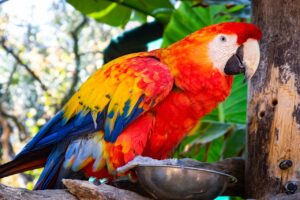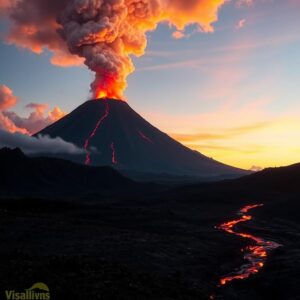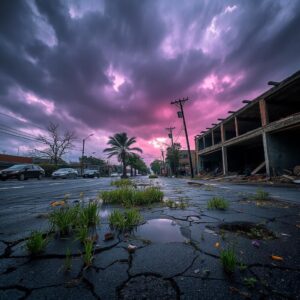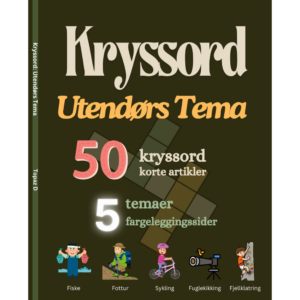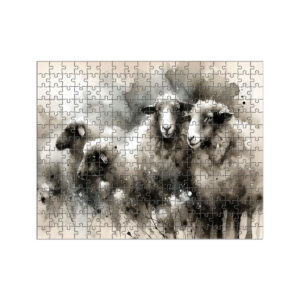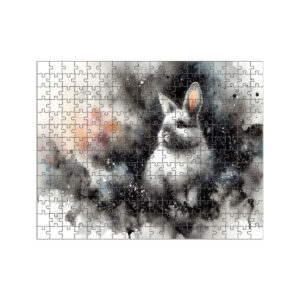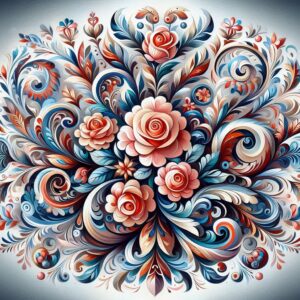
Explore & Play
Discover interesting topics and solve the accompanying crossword puzzle.
Mythical Creature Crossword | Fascinating world of mythical creatures
Table of Contents
Dive into the mysterious world of mythical creatures, where ancient legends blur the line between protectors and destroyers. You can start by testing your knowledge with the Mythical creature crossword, or if you’re new to the topic, feel free to explore the article first and then return to the puzzle for a deeper understanding. Either way, you’ll uncover fascinating insights about these legendary beings.
Mythical Creature Crossword
You can either fill in the crossword puzzle directly on this page or click the button in the bottom right corner to print it for free.

Guardians of the Underworld: Mythical Creatures that Protect or Destroy
Throughout history, mythical creatures have served as both protectors and destroyers, often taking the role of guardians of realms or forces of chaos that threaten the world. These creatures are a reflection of our collective fears, desires, and attempts to make sense of the unknown. In many myths, these creatures take on extraordinary powers, whether to safeguard sacred spaces or bring about devastation.
As you explore the fascinating world of these mythic beings, we invite you to test your knowledge through our mythical creatures crossword puzzle. Not only will you encounter legendary creatures like Cerberus and Hydra, but you’ll also learn about their significance in various cultures. So, whether you solve the puzzle before reading or after, let’s dive into the complex roles these creatures play in our world of myth.
I. The Role of Mythical Creatures in Protection and Destruction
In both ancient and modern mythologies, the roles of mythical creatures vary greatly. Some act as guardians, protectors of sacred realms, while others embody destruction and chaos. The duality of these creatures highlights the complexity of human nature—our constant struggle between good and evil, creation and destruction, order and chaos. As you explore each creature, you’ll discover how their roles differ across cultures but ultimately reflect similar themes of protection and destruction.
These creatures are often not just metaphors for the forces they represent, but also tangible reminders of the power and mystery of nature itself. In every culture, these beings serve as essential symbols—either as guardians or as reminders of the destructive forces that must be respected and feared.
II. Guardians of the Underworld: Protectors in Mythology
1. Cerberus: The Three-Headed Guardian
The Greek myth of Cerberus, the three-headed dog, highlights the creature’s role as the fierce protector of the Underworld. As the guardian of Hades, Cerberus ensures that no soul escapes from the realm of the dead. Its fearsome appearance—three snarling heads and a serpent-covered tail—symbolizes the unyielding nature of death and the afterlife. Cerberus’ duty is to maintain order in the Underworld, ensuring that the souls remain in their place and that no one, not even gods, can easily escape death’s grasp.
Cerberus’ role is pivotal in many Greek myths, notably in the stories of Heracles’ Twelve Labors, where the hero must capture the creature to prove his strength. This beast stands as a formidable barrier between life and death, representing the inescapable fate that awaits all mortals.
2. The Minotaur: A Watchful Beast in the Labyrinth
In the heart of Greek mythology lies the Minotaur, a hybrid of man and bull, tasked with protecting the maze that confined it. Born from the union of the queen of Crete and a sacred bull, the Minotaur is a symbol of chaos and confusion. However, its role as a guardian is crucial. It defends the labyrinth created by Daedalus, a maze so complex that it became nearly impossible for anyone to escape once trapped inside.
While the Minotaur’s guardianship is one of isolation and imprisonment, it also represents the challenge of confronting one’s deepest fears. The labyrinth, with the Minotaur at its center, is a metaphor for the trials and tribulations individuals must face. Its destruction at the hands of the hero Theseus symbolizes the triumph over personal chaos and confusion.
3. The Thunderbird: Guardian of the Sky and the Earth
Among Native American cultures, the Thunderbird reigns supreme, a creature that commands the skies and is believed to control the weather. This mighty creature, often depicted as a giant bird with wings that cause thunder and lightning, is a guardian of the natural world. The Thunderbird’s power is so immense that it can influence the very elements, bringing storms or calm to the earth below. It serves as a reminder of the interconnectedness of nature and the spiritual world.
In many tribes, the Thunderbird is seen as a protector of both the physical and spiritual realms, and its presence signals both divine intervention and natural balance. It is a symbol of strength, renewal, and the awe-inspiring power of the natural world, embodying the idea that guardianship often comes with great responsibility.
4. The Griffin: Guardian of Sacred Treasures
With the body of a lion and the wings of an eagle, the Griffin is a creature of both strength and vigilance, often guarding sacred treasures. This mythical beast is a protector of valuable objects, symbolizing the merging of two powerful forces: the strength of the lion and the vision and swiftness of the eagle. In ancient cultures, Griffins were often depicted as guardians of royal treasures and sacred artifacts.
From ancient Persian art to Greek and Egyptian mythology, the Griffin embodies both the majesty and the ferocity required to safeguard important possessions. Its symbolism extends beyond material wealth, representing the protection of knowledge, power, and honor. Its vigilance is seen as the ideal guardian of the sacred and valuable, guarding treasures against those who would seek to steal them.
III. Creatures of Destruction: Forces of Chaos and Fear
1. The Hydra: A Multi-Headed Terror
The Hydra, a monstrous multi-headed serpent, embodies destruction in Greek mythology, with its heads regenerating whenever cut off. This terrifying beast, which resided in the swamps of Lerna, was so powerful that it posed a deadly threat to anyone who dared approach it. Each head of the Hydra symbolized a different destructive force, and as one was severed, two more would grow in its place, making it a seemingly unstoppable force.
In the myth of Heracles’ Twelve Labors, the hero is tasked with slaying the Hydra. However, the challenge isn’t merely to defeat it physically; it’s to outsmart the creature. Heracles, with the help of his nephew Iolaus, eventually overcomes the Hydra by burning the stumps of its heads, preventing them from regenerating. The Hydra represents the destructive nature of unchecked power, where attempts to confront evil can often lead to unintended consequences.
2. The Kraken: A Beast from the Deep
The Kraken, a gigantic sea creature with the power to destroy entire ships, serves as a representation of the unknown dangers lurking beneath the surface of the ocean. Legends of the Kraken are prevalent in Scandinavian folklore, where sailors feared the monstrous beast, which could drag entire vessels into the depths with its powerful tentacles. The Kraken symbolizes the untamed and uncontrollable nature of the sea, an environment that can both protect and destroy in the blink of an eye.
The Kraken’s destructive nature is a reminder of the power of nature and the dangers that lie in the unexplored territories of the world. It evokes fear, not only because of its massive size but because it represents the uncertainty and dangers inherent in venturing into the unknown.
3. The Chupacabra: A Creature of Fear and Folklore
Emerging from Latin American folklore, the Chupacabra is known as a bloodthirsty creature that feeds on livestock, creating fear in rural communities. Descriptions of the creature vary, but it is often depicted as a reptilian creature with spines along its back, capable of draining the blood from goats, chickens, and other animals. The Chupacabra embodies the fear of the unknown, especially in isolated rural areas where strange occurrences are often attributed to supernatural forces.
The legend of the Chupacabra serves as a warning about the dangers of unchecked greed and the consequences of living in fear of the unseen. It also highlights the importance of folklore in providing explanations for unexplained events in communities, especially in times of hardship or uncertainty.
4. The Wendigo: A Spirit of Greed and Cannibalism
In Native American folklore, the Wendigo represents a creature of insatiable hunger, a spirit that drives its victims to cannibalism and madness. The Wendigo is often depicted as a gaunt, emaciated figure with a monstrous, insatiable appetite for human flesh. Its origins lie in the belief that those who engage in cannibalism, especially in times of extreme hunger, become cursed to become Wendigos themselves.
The Wendigo is a symbol of the destructive power of greed and excess. It serves as a moral warning, showing that the desire for more—whether it be food, wealth, or power—can ultimately destroy both the individual and the community.
IV. Hybrid Creatures: Blurring the Lines Between Protection and Destruction
1. The Sasquatch: A Mysterious Guardian or Destroyer?
The Sasquatch, often seen as a guardian of the wild, also evokes fear due to its elusive nature and mysterious reputation. Known as Bigfoot in North America, the Sasquatch is said to inhabit the remote forests of the Pacific Northwest, where it is revered by some as a protector of nature and feared by others as a dangerous, unpredictable creature. Its ambiguous nature as both a protector and a potential threat makes it one of the most intriguing creatures in modern folklore.
The Sasquatch represents the untamed wilderness and the fine line between human civilization and the natural world. Its role as a guardian is one of balance, ensuring that the natural world remains unspoiled, but its secrecy and occasional violent encounters with humans paint it as a creature to be respected and feared.
2. The Cyclops: One-Eyed Giants of Power and Danger
In Greek mythology, Cyclops are giant beings that serve both as protectors of sacred spaces and as embodiments of raw power and destruction. The Cyclops are most famously depicted in Homer’s Odyssey, where the hero Odysseus encounters Polyphemus, the most famous of the Cyclops. Polyphemus is a formidable being who symbolizes the destructive power of the giants, but he is also a keeper of sacred laws and boundaries, guarding his home fiercely from intruders.
The duality of the Cyclops as both a protector and a destroyer reflects the unpredictable nature of power. While the Cyclops may protect sacred spaces, their enormous strength and violent tendencies can lead to destruction if provoked.
V. Spirits and Supernatural Entities in the Role of Guardians or Destroyers
1. The Banshee: The Harbinger of Death
The Banshee, a wailing spirit from Irish mythology, is not a guardian, but its cries foretell destruction and death, making it a harbinger of doom. The Banshee is typically depicted as a woman whose mournful wail signals the death of a family member. While she is not a destroyer in the traditional sense, her presence is closely tied to the inevitable end of life, making her a force of destruction and transition.
The Banshee’s role as a messenger of death reflects the cultural understanding of life and death as interconnected forces, each an essential part of the natural cycle. While she brings no harm directly, her wails signal that destruction is imminent.
2. The Djinn: Spirits of Destruction or Protection?
In Arabian mythology, Djinn are supernatural beings that can be both protectors and destroyers, depending on their nature and the wishes they grant. The Djinn, often seen as powerful spirits, have the ability to shape-shift and grant wishes to humans. However, their nature can be unpredictable; while some Djinn offer protection and guidance, others can bring about harm, causing chaos and destruction in the world.
The Djinn serve as a reminder of the delicate balance between good and evil, where power can be both a blessing and a curse. The unpredictable nature of these spirits makes them both revered and feared, as their desires can sometimes lead to unintended consequences.
VI. Mythical Creatures that Protect and Destroy: The Fine Line Between Good and Evil
Many mythical creatures walk the fine line between guardianship and destruction. Whether through their roles as protectors of sacred spaces or their ability to bring chaos and devastation, these creatures represent the complexities of human understanding of good and evil. They remind us that protection often comes with great power, and the destructive forces of nature must be respected.
Ready to Test Your Knowledge?
Now that you’ve learned about some of the most fascinating mythical creatures, it’s time to put your knowledge to the test! Play our mythical creatures crossword puzzle and discover more about the guardians and destroyers in folklore. Don’t forget to return to the article for more details on these legendary beings!
Share to...
I hope you enjoy the content.
Want to receive our daily crossword puzzle or article? Subscribe!
You may also be interested in
Share to…
Want to receive our daily crossword puzzle?
-
Jigsaw Puzzles
Enchanting Four Sheep Zodiac Jigsaw Puzzle 250 | 300 | 500 Pieces
kr 348,00 – kr 439,00Price range: kr 348,00 through kr 439,00 Select options This product has multiple variants. The options may be chosen on the product page -
Jigsaw Puzzles
Chinese Zodiac Rabbit Jigsaw Puzzle – Ink Art Series 250 | 300 | 500 Pieces
kr 348,00 – kr 439,00Price range: kr 348,00 through kr 439,00 Select options This product has multiple variants. The options may be chosen on the product page -
Jigsaw Puzzles
Rose-Tinted Dreams Floral Puzzle 250 | 300 | 500 Pieces
kr 348,00 – kr 439,00Price range: kr 348,00 through kr 439,00 Select options This product has multiple variants. The options may be chosen on the product page





